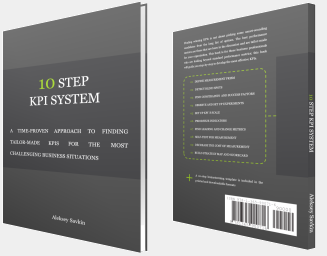 Performance measures in the context of Natural Disaster management talk about being aware of the possible hazards one might have to encounter. Quantification of Planning and anticipations form the pillars of this strategy. With respect to natural disaster management KPIs can be effectively formulated under four major perspectives- disaster monitoring and funding, natural disaster risk reduction, natural disaster preparedness and education and training.Disaster monitoring and funding include number of early warning models developed, regular space remote sensing, percentage of funding from government, NGOs and direct public funding. Disaster Reduction is yet another direction which could help in the task. Indicators like number of natural disaster risk maps produced, number of vulnerable areas identified, dissemination of early warnings and % of natural disaster risks prioritized.Disaster Preparedness can be covered by introducing KPIs such as percentage area and building inspections, % increase in relief measures included, number of damage assessment initiatives and number of Rehabilitation and reconstruction activities.Education and Training perspective can be had from number of training sessions of safety management, number of medicinal training programs conducted in a year, number of psychological strength development training sessions held and number of on-field consultations provided.
Performance measures in the context of Natural Disaster management talk about being aware of the possible hazards one might have to encounter. Quantification of Planning and anticipations form the pillars of this strategy. With respect to natural disaster management KPIs can be effectively formulated under four major perspectives- disaster monitoring and funding, natural disaster risk reduction, natural disaster preparedness and education and training.Disaster monitoring and funding include number of early warning models developed, regular space remote sensing, percentage of funding from government, NGOs and direct public funding. Disaster Reduction is yet another direction which could help in the task. Indicators like number of natural disaster risk maps produced, number of vulnerable areas identified, dissemination of early warnings and % of natural disaster risks prioritized.Disaster Preparedness can be covered by introducing KPIs such as percentage area and building inspections, % increase in relief measures included, number of damage assessment initiatives and number of Rehabilitation and reconstruction activities.Education and Training perspective can be had from number of training sessions of safety management, number of medicinal training programs conducted in a year, number of psychological strength development training sessions held and number of on-field consultations provided.
Read Why do business professionals choose ready-to-use KPIs? to find out the answers to these questions:

Ideally, you need to have a strategy (in a form of a strategy map) before you start thinking about the ways to measure its execution (KPIs). Don't have a strategy map yet? Use free Strategy Map Wizard to create a strategy map for your current business challenges. The wizard will:
The whole process takes on average 6 minutes. Give it a try right now - it's free.
Nature's fury can turn surroundings adverse in unbelievably short span of time. This asks for keeping the solutions for tackling the inevitable truth of 'Natural Disasters'. There can be five major categories that are identified when it comes to classification of natural crises- 'havocs related to water and climate', 'disasters pertaining to chemical and nuclear waste', 'biological disasters', 'accidents' and 'geological disasters'.
It is well accepted and understood that some areas are more prone to getting hit by these natural disturbances owing to the geographic location that conferring those 'a disadvantage'. This calls for a 'more-than-needed' approach to be followed.
Organizations involved in this task are required to be prepared for delivering their services and making sure that equipments reach the desired locations. A monitoring tool is needed to keep a track of how things have been moving in this context.
This can be done by coming up with metrics called KPIs (Key Performance Indicators) to which 'target' and 'actual' values can be assigned. This eases out the job of measuring and managing performance issues, when it comes to 'managing Natural Disaster'. These 'quantitative' phrases are put together on a Balanced Scorecard, a strategy that was devised in 1990s by Norton and Kaplan.


This is the actual scorecard with Natural Disaster Management Measures and performance indicators. The performance indicators include: natural disaster management, natural disaster monitoring and funding, number of early warning models developed, regular space remote sensing, % increase in government funding, % increase in ngo-s and direct public funding, natural disaster risk reduction, natural disaster risk maps produced, number of vulnerable area identified, dissemination of early warnings, % of natural disaster risks prioritized., natural disaster preparedness, % area and building inspections, percentage increase in relief measures included, number of damage assessment initiatives, number of rehabilitation and reconstruction activities, education and training perspective, number of training sessions of safety management, psychological strength development training sessions, number of medicinal training programs conducted, number of on-field consultations provided.
Download a trial version of Natural Disaster Management Evaluation Balanced Scorecard or purchase a full version online.

How is this book different from 796 other book titles about KPIs on Amazon?
"Before writing a single line, I formulated some guiding principles, one of them was: "If our clients ask, "How can I find a good KPI for..." - I want this book to provide a perfect answer."
